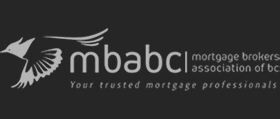In this video, I look at what fixed and variable mortgages are as a refresher for past viewers or of my first time buyers.
Transcription of Video Blog:
Hi, everybody. It’s Rowan Smith from the Mortgage Centre.
I want to talk today about fixed or variable. Specifically, I want to define what they are so that when someone is telling you they got a fixed rate at a certain percentage or variable rate at another that you understand what exactly they’re saying so that you can compare apples to apples.
A fixed-rate mortgage is just that. The rate is fixed for the life and the length of your term. If you got a three-year term, and it’s at 3.25, you pay 3.25 throughout the entire term. If it’s a five-year term, and it’s 4.25, you pay 4.25 for the entire term. It does not matter if interest rates go up or go down; your rate is fixed, and your payment is fixed.
A variable-rate mortgage, conversely, is one where the payment fluctuates according to some other interest rate, usually prime rate. Prime rate is dictated by the Bank of Canada and the banks that match or try to follow very closely their prime rate.
Now if you have a prime-rate mortgage, the best available in the market that I have today, it’s prime minus 0.55. Prime rate is 2.25; that means a net rate of 1.7. So 1.7% on a variable versus, say, 4.25 on a five-year fixed. So variable has a substantial savings. However, your payment can and will rise if prime rate goes up.
There are different types of variable. There’s variable capped, where there’s a limit to how high it can go. Before that, you won’t be get getting 1.7. You’ll probably be getting closer to 3% in today’s markets.
You’re going to give up something in terms if you want more security. Whether it be a fixed rate or a fixed payment, you’re going to pay a higher rate.
I’ve seen several ads, and I saw one institution run an ad where what they had was on their whiteboard out front of their institution. It said, “Five years, 1.75.” Of course, clients are calling me saying, “My bank’s advertising 1.75.”
What they don’t put on that sign is it’s a variable. Now you can guarantee that it’s going to be below the fixed rate that I’m quoting if you’re getting a variable rate, because variable rates are generally lower. But they do have that upside risk that your payment could rise.
So there it is: fixed and variable. For the Mortgage Centre, I’m Rowan Smith.





